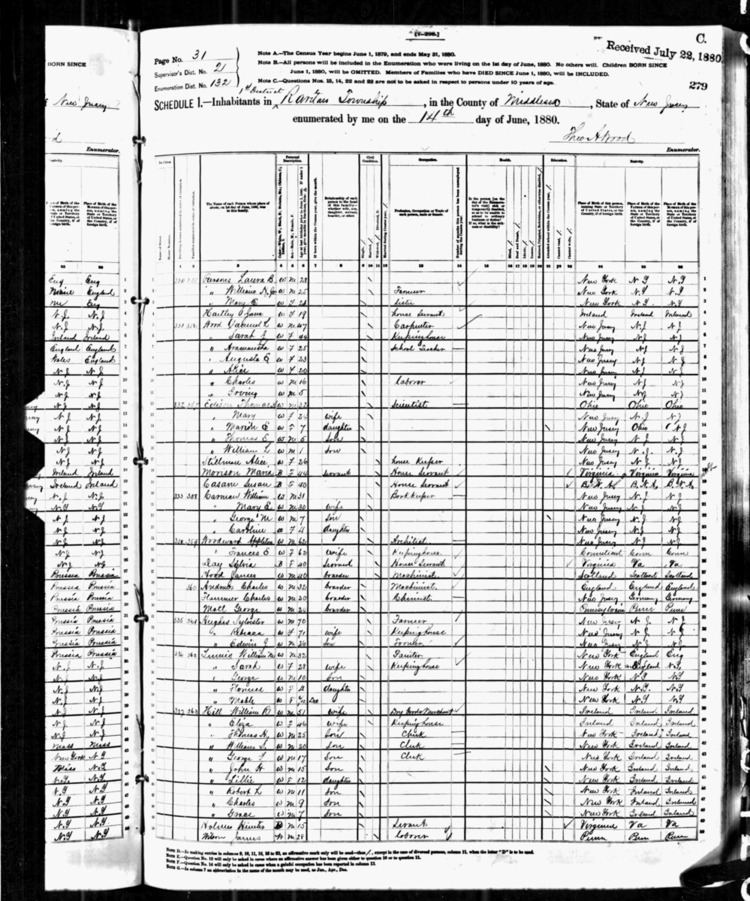 | ||
The United States Census of 1880 conducted by the Census Bureau during June 1880 was the tenth United States Census. It was the first time that women were permitted to be enumerators. The Superintendent of the Census was Francis Amasa Walker.
Contents
Data collected
Five schedules were authorized by the 1880 Census Act, four of which were filled out byent of certain members of the population. Experts and special agents also were employed to collect data on valuation, taxation, and indebtedness; religion and libraries; colleges, academies, and schools; newspapers and periodicals, and wages.
Special agents were also charged with collecting data on specific industries throughout the country, and included the manufactures of iron and steel; cotton, woolen, and worsted goods; silk and silk goods; chemical products and salt; coke and glass; shipbuilding; and all aspects of fisheries and mining, including the production of coal and petroleum.
Full documentation for the 1880 population census, including census forms and enumerator instructions, is available from the Integrated Public Use Microdata Series, which contains microdata.
Data availability
The original census enumeration sheets were microfilmed by the Census Bureau; after which the original sheets were transferred to various state archives, libraries, or universities. The microfilmed census is available in rolls from the National Archives and Records Administration. Several organizations also host images of the microfilmed census online, along which digital indices.
Microdata from the 1880 population census are freely available through the Integrated Public Use Microdata Series. Aggregate data for small areas, together with compatible cartographic boundary files, can be downloaded from the National Historical Geographic Information System.
Results
The 1880 census determined the resident population of the United States to be 50,189,209, an increase of 30.2 percent over the 39,818,449 persons enumerated during the 1870 Census. The mean center of United States population for 1880 was in Boone County, Kentucky.
The results from the census were used to determine the apportionment for the 48th, 49th, 50th, 51st, and 52nd sessions of the United States Congress.
The processing of the 1880 census data took so long (eight years) that the Census Bureau contracted Herman Hollerith to design and build a tabulating machine to be used for the next census. The 1880 census also led to the discovery of the Alabama paradox.
